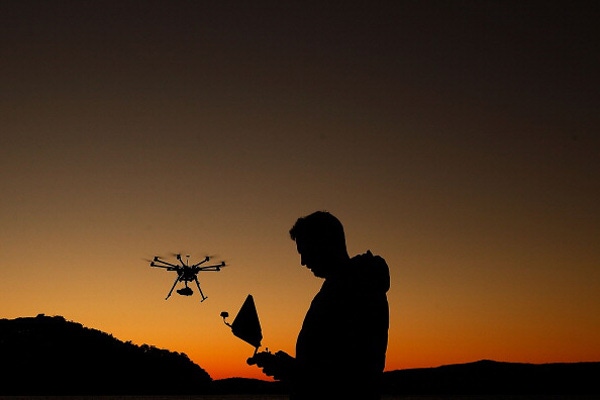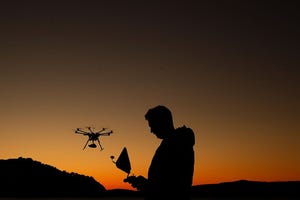August 4, 2014

Drones, or unmanned aerial vehicles (UAVs), are an up-and-coming technology that one day may deliver to our doorsteps everything from televisions to groceries. In fact, Amazon is seeking clearance for same-day delivery by UAV of purchases to customers. Who knows, perhaps one day our home-delivery pizzas will come via UAV.
The applications for UAVs are boundless. Of course, UAVs are best known for their uses in defense, law enforcement and security, but UAVs are also commonly used in search-and-rescue missions, maritime patrol, monitoring installations like pipelines or watching for wildfires. Because they can fly and hover discreetly, UAVs are great for film work and sports photography. Even in agriculture, there’s research underway on the use of UAVs to monitor crops and pasture/rangeland conditions.
Yes, UAV technology is impressive stuff. Best of all it’s inexpensive. Where a trained pilot and thousands of dollars would be needed to perform such surveillance by airplane, a few hundred dollars can put a UAV in anyone’s hands. What does that kind of capability and affordability mean for the privacy concerns of all citizens, including livestock producers? And don’t think such applications aren’t already being considered. In fact, UAVs have been used by anti-hunting activists to harrass hunters.
Subscribe now to Cow-Calf Weekly to get the latest industry research and information in your inbox every Friday!
According to an article entitled, “How Drones Will Change The Way You Eat,” by Mary Beth Albright for The National Geographic, “On situational awareness, drones will improve the welfare of animals we eat and use for food production. Investigative journalist Will Potter has been long frustrated by state ‘ag gag’ laws criminalizing the use of false pretenses to access a farm for purposes not authorized by the owner (such as photographing animal cruelty). In some cases, the photographer is subject to greater punishment than the perpetrator of animal cruelty. So Potter got creative with a Kickstarter campaign to buy drones and photography equipment to fly over and photograph factory farms and concentrated animal feeding operations (CAFOs), notorious for close quarters and animals living in inches of their own waste.

Photo Credit: Brendon Thorne; Getty Images
“Titled ‘Drone on the Farm,’ the campaign to combine drone photography with investigative reporting raised about $75,000—more than twice its original goal—for materials and legal counsel. The rules are still murky about the relatively new area of unmanned flight and photography, so legal challenges are practically inevitable.
“And state ag-gag laws’ constitutionality is being tested in federal court as violations of the First Amendment and federal whistleblower statutes. Whether one agrees with Potter’s goal of exposing factory farms, the general privacy ramifications of allowing contested aerial photography, particularly when drones can cost as little as a few hundred dollars—are troubling.”
I imagine Potter will learn quickly enough that privacy is still protected here in the U.S. Meaning, while we can take photographs freely on public property, flying over someone’s home and place of business to take photographs is illegal. But could a UAV equipped with a high-definition camera park over public ground and film onto private property? There are many privacy questions that will need to be addressed.
This kind of “big brother” sneakiness makes me nervous. That’s not because I’m a beef producer, but because I don’t like the idea as a private citizen of having “eyes in the sky” potentially watching every move I make.
Of course, as beef producers, we must acknowledge and understand that society demands more from us today. They want more transparency regarding how their food is produced. What consumers are hearing and reading from some activist sources is far from the reality of family-owned beef operations. Chances are, if a consumer actually toured one of these businesses, they would be impressed rather than horrified by the conditions.
That’s why it’s important that we as producers start these conversations with consumers. Let’s work to share the story ourselves and bridge this important gap. Let’s start sharing our own stories on social media and help the real story of beef production go viral.
What do you think about drones flying over feedlots? Share your thoughts in the comments section below.
The opinions of Amanda Radke are not necessarily those of Beefmagazine.com or the Penton Farm Progress Group.
Other trending stories at BEEF:
Take A Virtual Tour: World's Largest Vertically Integrated Cattle Operation
9 Tips For Preventing Pasture Bloat In Cattle
Cows Out On Pasture | 80+ Grazing Photos From Readers
5 Trending Headlines: Mobile Shade For Cattle & Animal Ag Wins An Antibiotic Lawsuit
You May Also Like



